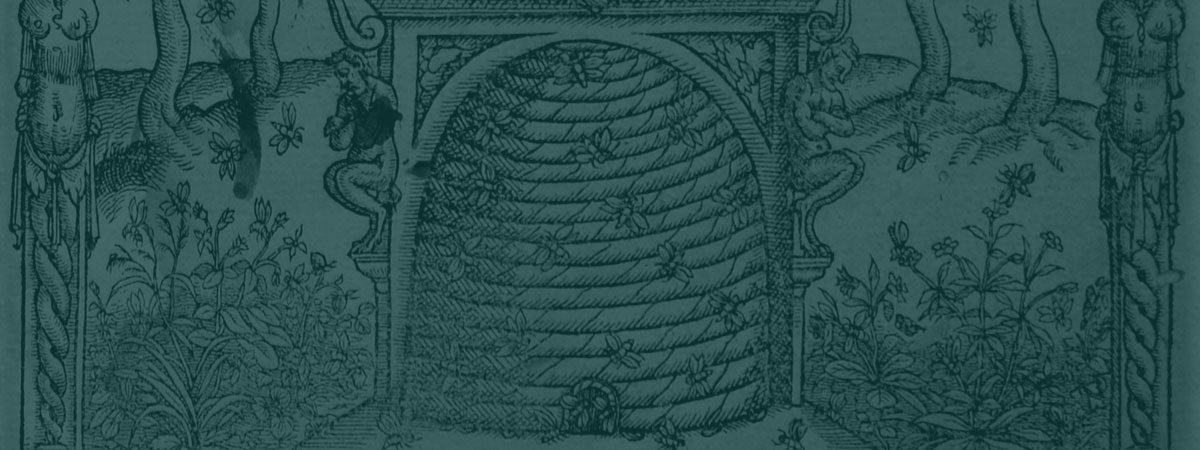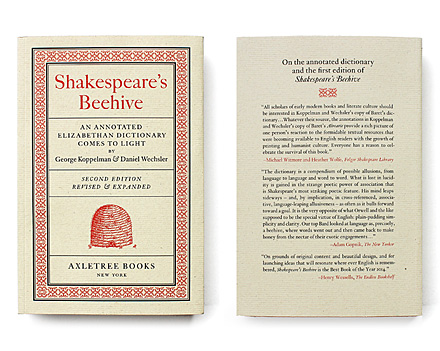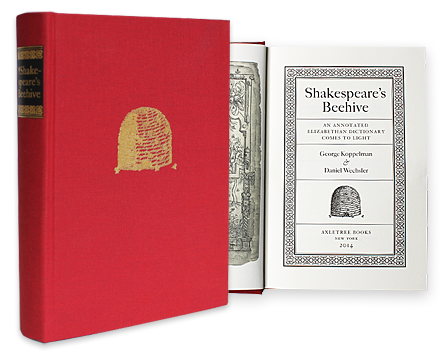Prologue
Introduction to Shakespeare's Beehive

How does one constantly go about finding language that offers fresh ways of depicting characters constrained by the same basic human motivations, circling similar dramatic situations, while playing out their various impulses and desires? No writer ever concerned himself less with the strain of having to do so, nor delighted in the conceit of challenging himself to accomplish more under that principle, than did Shakespeare.
Publication
by George Koppelman and Daniel Wechsler

In their newly expanded study of Shakespeare’s Beehive: An Annotated Elizabethan Dictionary Comes to Light, antiquarian booksellers George Koppelman and Daniel Wechsler further their argument that the annotations in their copy of Baret’s Alvearie purchased on eBay belong to William Shakespeare. Using example after example, the authors demonstrate how the annotations and Baret’s text are intricately tied both to Shakespeare’s work and a number of previously speculated details from Shakespeare’s life.
Baret’s Alvearie
The Complete Dictionary with Annotations

Every page of the annotated copy of Baret’s Alvearie is available for viewing. A sampling of the different types of annotations is provided and defined, along with explanations as to where and how the annotator uses them. It is highly recommended that the second edition of Shakespeare’s Beehive: An Annotated Elizabethan Dictionary Comes to Light be read as a companion to studying the annotations and considering the possibility of Shakespeare as annotator.




